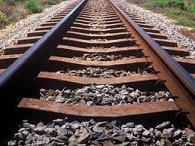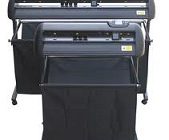Require info on South African railways electric locomotives? Learn more about the history of South African railway and electric locomotives…
When South Africa was developed as a colony of the Dutch and British empires, there were many South African railway and electric locomotive established throughout the country. One of the longest electrified railway lines is the HE Natal division in South Africa. It is part of the South African Railways and Harbour Administration. It was electrified to transport goods. As far back as 1935, a 45 mile area of the Durban to Cato Ridge was electrified, thereby creating an electrified locomotive network to the Transvaal. Along with that, electric locomotives were also established from Glencoe in the north all the way to Volksrust, in the Transvaal. This section was exceptionally important because the town of Newcastle was home to the iron and steel industry. Furthermore the coal industry was based in the area of Glencoe. The South African railways electric locomotives were established much later at the Natal Railway.
Interestingly enough, most people would be surprised that South African railways electric locomotives also ran in the area where the coal was mined and produced. Most researchers would assume that the whole railway line in that region operateded on the extracted coal.
Approximately 223 miles of the track in the Johannesburg area have also been converted to electrical locomotives. The line runs from west to east starting at Randfontein passing via Johannesburg and Germiston all the way to Springs. Further along another line originates from Germiston to Welgedacht. That track stretches for 74 miles and has many junctions. It is a passenger track and is exceptionally overloaded with high traffic. Johannesburg traffic comes from the passengers and the mineral traffic comes from the different parts in the region.
Glencoe is considered the central point of the Natal coalfields and has a large amount of traffic moving south towards Durban, which is basically the ship coal that is exported. It is actually surface mined in this area and the importer also pays for the coal transportation. The cheap railway rates allow the transportation of the coal over 240 miles to the port. The efficient South African railway utilized the electric locomotive to ensure timely delivery of the bulky cargo time after time.
The city of Glencoe is located 4,310 ft. above sea-level and the railway line descends from it to 3,190 ft. near Colenso. It is now home to the power station that generates power for the Natal railway. The railway line passes all the way through Elandslaagte and Ladysmith.
From Colenso to Estcourt is a 20-mile distance and the railway line ascends to 3,830 ft., and on to the summit-level of 4,980 ft. as it travels over the pass in the mountains of Drakensberg. These mountains are actually 11,000 ft. above sea level and from this point forward the railway line goes to the town of Pietermaritzburg via Willbrook covering the entire 65 mile route. On the approximately 35 miles of the track covering the distance from Estcourt to Mooi River, the ruling gradient occurs in a range of 1 in 65. The average speed of the steam engine used to be 8 m.p.h. on this track while the South African railways electric locomotive trains is 21 m.p.h. making it impressively more efficient.





